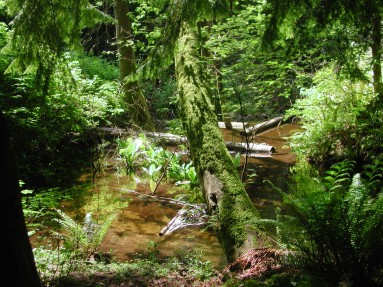Wetlands Area
Healthy wetlands benefit fish, wildlife, and humans because they protect
many natural resources, only one of which is clean water. Unfortunately,
over half of the wetlands in the lower-48 states were lost between the
late 1700s and the mid-1980s, and undisturbed wetlands still face threats
from development. Improper development or excessive pollutant loads
can damage wetlands. The degraded wetlands can no longer provide water
quality benefits and become significant sources of NPS pollution. Excessive
amounts of decaying wetlands vegetation, for example, can increase biochemical
oxygen demand, making habitat unsuitable for fish and other aquatic life.
Degraded wetlands also release stored nutrients and other chemicals into
surface water and ground water.
The wetlands area that is dealt with in the RiverWeb model is one that
has been overdeveloped, and is far from pristine. There are several
paved roads running through the habitat, and the area is heavily used by
humans. Activities include hiking, driving, biking, swimming, and
fishing. Powerboats and personal watercraft are common, and contribute
to noise as well as water pollution.





